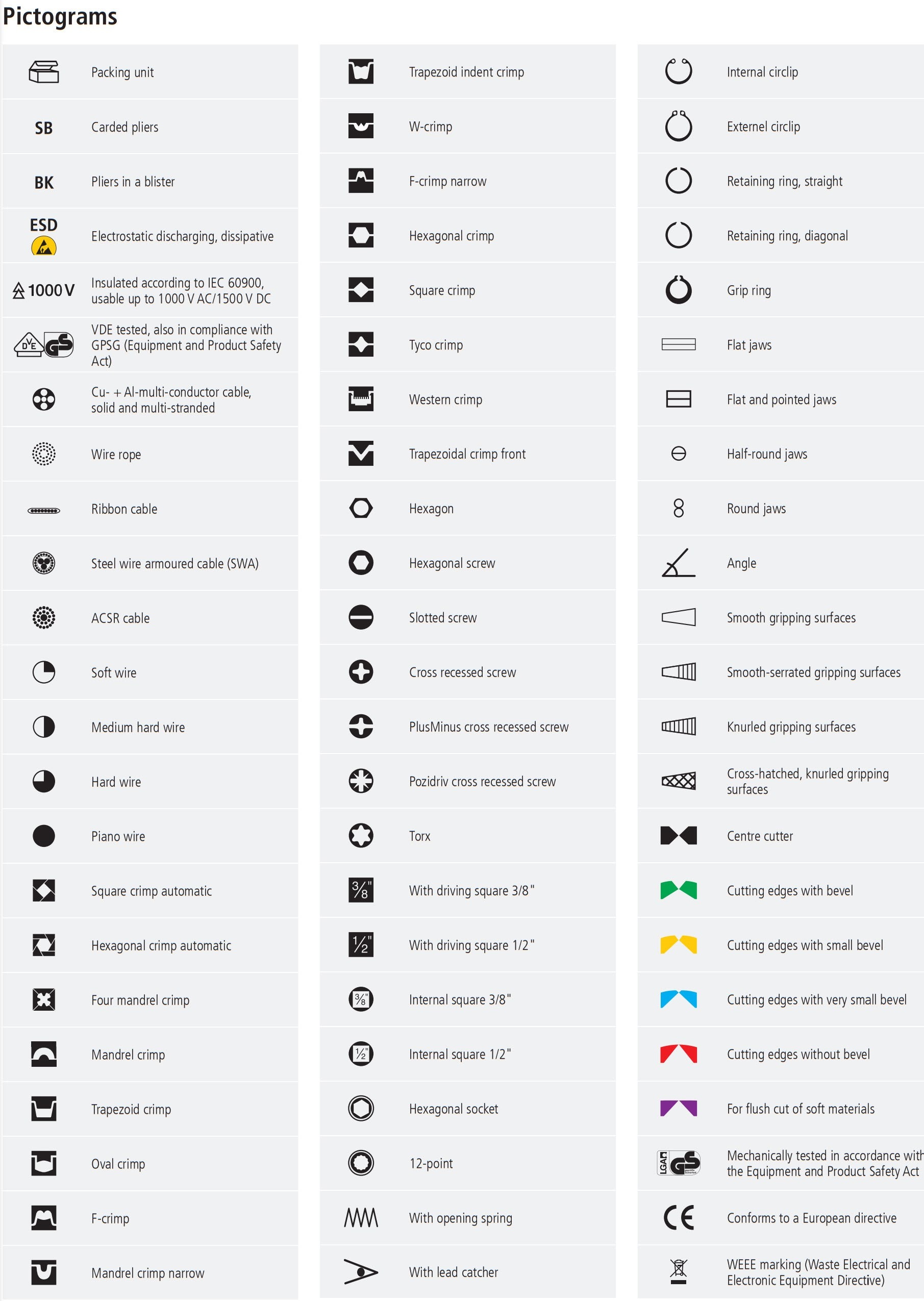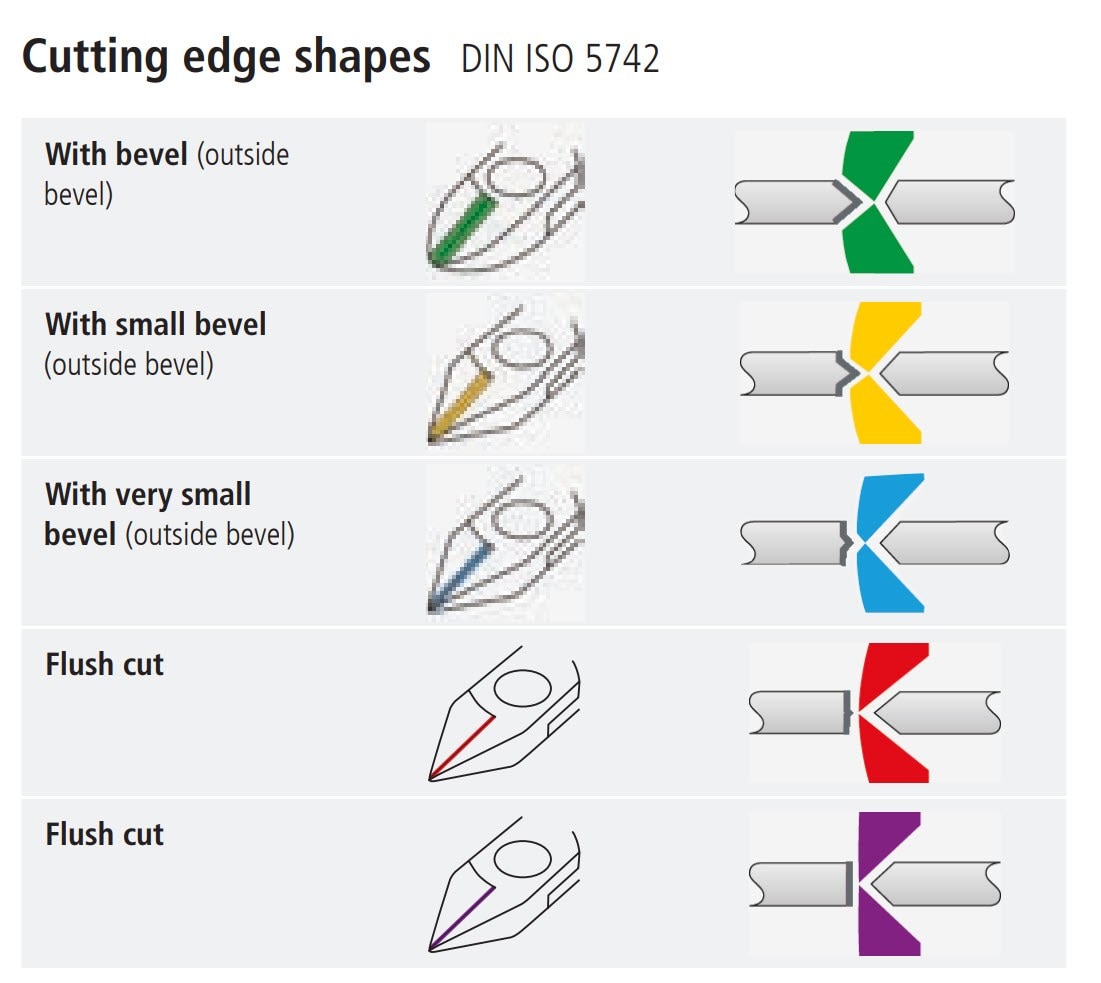It feels a bit weird writing a blog post where I’m merely pointing out someone else’s YouTube link (and some screenshots from the Knipex website)!
But I found this video pretty interesting; it explains why, instinctively, many of us feel that Knipex stuff is good quality; it is because it’s mostly true. The Knipex tools are harder and have a shallower angle on the cutting edge (circa 50 degrees instead of 45 degrees), and the surfaces are flatter or aligned better (I don’t know if all of the Knipex models have these features, though).
Just focussing for now on wirecutters for electronics work (not electricians or gardening cutters); on the Knipex website, you can find wire cutters that have extremely high hardness values (greater than 80 HRC) that can cut very hard and thick wires (e.g., steel). However, they might be more brittle. Also, such wire cutters cost a _lot_.
The next level down seems to be about 60-62 HRC, which is still very hard, and those are, while not cheap, at least reasonably priced because they should last longer than weaker tools. I think those might be a good sweet spot for price-performance.
The way the cutters are formed matters, too, though. I’m not a fan of the bent steel type (e.g., Knipex Super Knips) since I’d always be worried I’d bend them. Maybe I’m over-worrying. However, there are also some reviews online where some broke, perhaps because the material is thin. I’d much prefer the cast-and-machined types, e.g., 79 52 125 looks excellent and a very reasonable price given the good HRC value, plus it’s an _almost_ flush cut (if that’s what is wanted!).
Ever wanted to know what all those funny symbols meant on the Knipex website? At least for me, it was not straightforward to locate the info.
It turns out that the symbols are described in their catalog pages near the end. I will paste them here for convenience (and I will delete them if anyone has an issue with that).
Image source: Knipex website, product catalog.

The weird symbol that looks like a sideways eye, indicates that there is a wire-catcher for preventing the cut ends pinging across the room.
The zigzag symbol indicates that the cutters spring open, which most of the ones intended for electronics do, as far as I can tell.
Fairly key for wirecutters are the colored symbols which indicate the amount of flushness of the cut. Purple is completely flush and square. I think blue could be a nice compromise.
Image source: Knipex website

The product catalog explains the types of plier/cutter joints. From that, the best joints are either box for strength or single for precision:
Image source: Knipex website

The product catalog also explains the product codes; it doesn’t seem very useful since it doesn’t allow decoding things like hardness.
It would be interesting to hear other people's thoughts and opinions on pliers/cutters, Knipex or otherwise, recommendations and disappointments (specifically for electronics, let's keep electrician's pliers/cutters, and wire-strippers for another discussion sometime.
Thanks for reading!

-

Umuju
-
Cancel
-
Vote Up
0
Vote Down
-
-
Sign in to reply
-
More
-
Cancel
Comment-

Umuju
-
Cancel
-
Vote Up
0
Vote Down
-
-
Sign in to reply
-
More
-
Cancel
Children